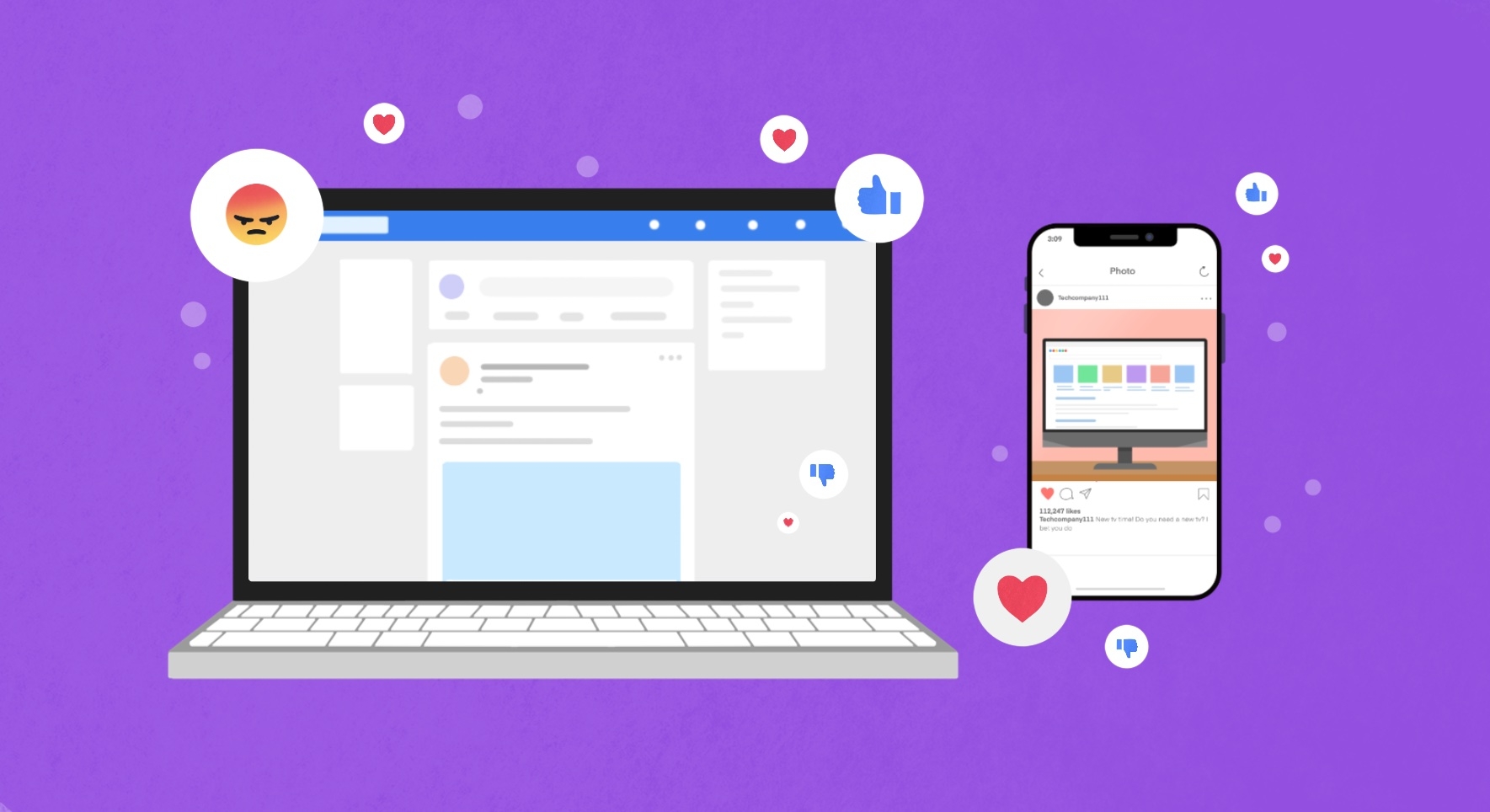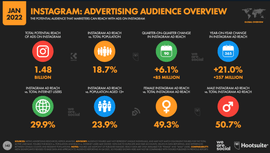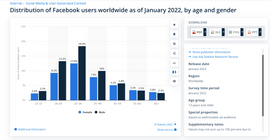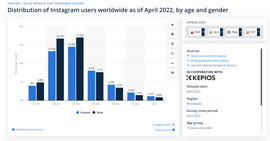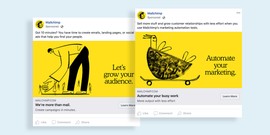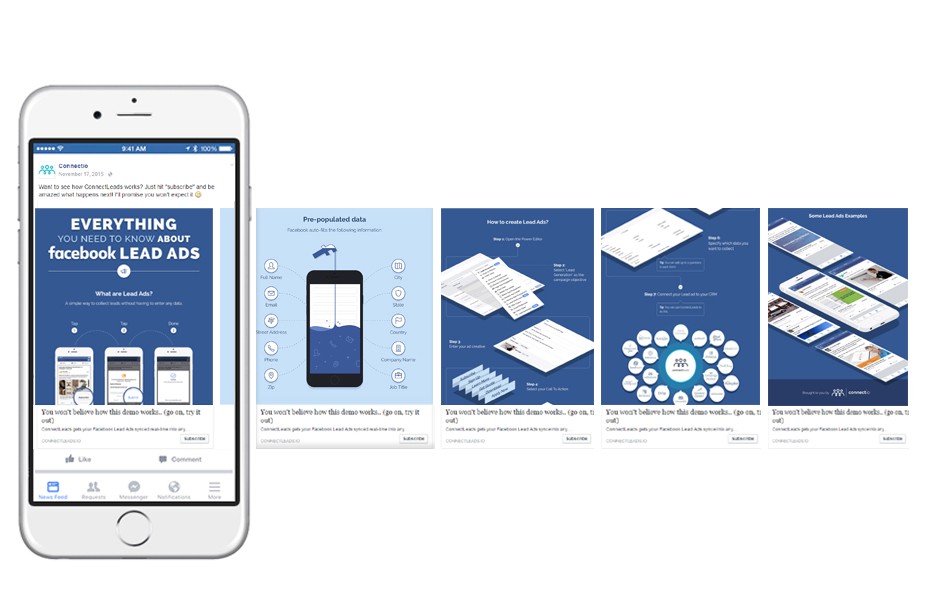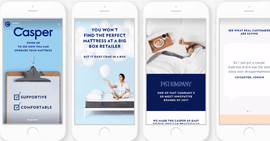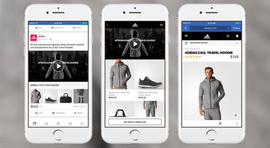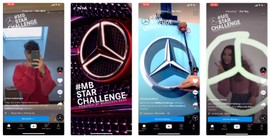So you’ve decided on a marketing budget. And you want to make sure you drive as many sales as possible with it. So the next logical question is, which platform will give you the best return on ad spend?
When comparing Facebook ads vs Instagram ads, the two certainly have lots of similarities, which is unsurprising given they’re both run by the same parent company, Meta. But despite some of their shared features and functionality, they are two very distinct platforms.
The type of posts that perform well differ. CTAs don’t work the same way. And perhaps most importantly, the audience demographics skew in different directions. And because of that, some businesses are best off spending more on Facebook ads, while others are better off spending more on Instagram ads.
But deciding on Facebook ads vs Instagram ads can be tricky, with both platforms boasting impressive stats. Facebook is bigger overall with 3 billion monthly active users. But according to Hootsuite’s Digital 2022 Global Overview Report, Instagram’s ad reach has increased by a huge 21% in the last year alone.
Ultimately, the platform you choose depends on your business and your goals. There is no definitive answer. So let’s unpack the most important differences between the two platforms to help you decide what’s best.
Is it Facebook ads only? Instagram ads only? Or a blend of both?
Shortcut: Use Previous Organic Data
If you’ve already got a business account with Facebook and Instagram, then take some time to analyse the data you already have. Review all your previous post metrics and analytics. Find out which platform got more organic engagement, then allocate more budget to it.
But don’t abandon the other one altogether. Allocate a smaller budget to it and test the waters – try different forms of content, for example, and see if any of your paid posts perform better. Use your budget to run experiments and learn what works before committing a bigger spend.
Whichever platform you’re going with, try to model your initial ads on your best performing organic posts. The best ads are the ones that speak directly to your customers needs and pain points. So figure out what made your tops posts so appealing. And what the ones that didn’t do so well were missing.
Also, look at the ads your competitors post. Do they seem to be more visible on Facebook or Instagram? What kinds of ads do they post? Do they lead with images of people? Or with product-focused imagery? Create a folder and save your favourite examples of competitor ads to use as inspiration for your own campaigns.
We spoke to Alex Jackson, Paid Social Lead at the performance marketing agency Hallam, about how to create high-performing ads in a recent webinar. He said:
“Successful ads are always based around the customer, not your business. Customers have no idea about your targeting, budget, or goals. All they see is the ad placed in front of them. So you need to use that opportunity to create an emotional connection – whether that’s through helpful educational content, resolving their needs, or giving them something they didn’t know they needed.”
But what if you don’t have an account on either platform, or you have and they’re both performing equally well?
Here are a few more things to consider when deciding on budget allocation.
Who’s Your Audience?
According to a recent study by Statista, Facebook’s most popular age range by some distance is 25-34.
This is also the most popular age range on Instagram. But unlike Facebook, it’s very closely followed by the younger 18 – 24 age bracket.
This shows that whilst Facebook remains the most popular platform by numbers, it does have a slightly older demographic than Instagram. Although both are losing younger users as they flock to TikTok and Snapchat (more on that later).
The key here is to define who your audience is. Which users are more likely to engage with your ad? Which users are more likely to buy your product?
If you want to reach a very niche audience, you may be better served on Facebook as it has a bigger overall user base and more advanced targeting options than Instagram.
On the flip side, if you’re new to paid ads and want to ease yourself in, Instagram might be a better fit as its simplified advertising options are easier to navigate.
What Are Your Advertising Goals?
Before you start comparing Facebook ads vs Instagram ads, think about what you want to achieve. For example, do you want to increase traffic to your site or social channels? Do you want to build awareness of your brand? Get more engagement with your posts?
Setting a goal is a requirement when running ads on Facebook and Instagram through Ads Manager. And there are a lot of options. Which also means a lot of ways to waste ad budget – if you don’t outline your objectives first.
Whilst we’re on the subject of Ads Manager, it’s also worth familiarising yourself with it and how it works. Instead of me telling you, here’s a great video outlining the basics:
The general consensus is that Facebook is best for generating B2B leads and web traffic, whilst Instagram is best for eComm sales and brand awareness. But as we’ve mentioned, this also hinges on your product/service and your ideal audience.
Which Platform Suits Your Ad Content Better?
Another factor in deciding between Facebook vs Instagram is the kind of ads you want to run. This is usually dictated by the creative assets you have – either to hand or what you’re able to create.
Both platforms are fairly similar in the ad types and formats they offer. Although one big difference between the two is the lack of clickable links in Instagram ad captions.
Instead, Instagram relies on CTA buttons on posts or their “swipe up” CTA option on stories. Let’s have a look a few different ad types in some more detail.
1. Image ads – Also known as photo ads, consist of a still image, copy, and a call to action, usually to the product page.
2. Video ads – Similar to image ads except the content is video. Video ads get a lot of engagement. But usually take longer to put together. Therefore, it is recommended to use a video ad maker to create video ads quickly and easily.
3. Carousel ads – Contain up to 10 video or images, or a combination of both, which users click through. The great thing about carousel ads is that each image or video can have a unique link, or you can point all of them to the same product.
4. Poll ads – These allow you to survey users by asking a question with two possible answers. Useful for boosting engagement, finding out what your audience thinks about your latest product and generating brand awareness.
5. Lead ads – Provide your prospects with a quick and easy form to complete once they click the ad. It’s a great way for brands to develop an email list.
6. Stories ads – These are positioned within the ‘Stories’ feature of each platform, rather than in the user feed. Stories’ popularity, and full-page format mean ads perform well, especially on Instagram where the feature is used more often.
7. Collections ads – A new mobile-only ad format. They show multiple items at once, with one main item taking centre stage and others featuring underneath. Collections ads also have space for a few lines of ad copy.
Because Instagram is geared towards visuals, if you’re going down that route then make sure your image or video assets are on point. With stiff competition, and less copy to rely on, it’s vital to ensure your products are as attractive as possible.
If you’re more focused on promoting written content, such as blogs, PDFs or case studies, then Facebook ads might be the better option. Their platform tends to be more helpful for B2B lead generation and allows for more copy in posts.
Which Industry Are You In?
If you’re a business that relies on visuals to showcase your product, like food, fitness or fashion, then you’ll likely be much better suited to Instagram (unless your audience is notably older, in which case Facebook might still be a better option).
As we mentioned in the last section, Facebook is suited to posts with more copy. And this is great if you’re in a B2B industry where you need more words to define your value proposition. This makes Facebook ideal for selling courses, services, and B2B software.
The industry you’re in will also determine how much you’ll need to spend on ads. If your B2B product or service is very expensive, you’ll need more touchpoints before a consumer commits to the purchase. According to Alex Jackson, you’ll typically need to reach a customer between 8 and 10 times before they buy.
But if you’re selling a cheaper product like fashion items, you don’t need as many content touchpoints so you’ll spend less on ads for every sale. The downside is you need to achieve much higher overall sales volume to be profitable.
Lastly, keep in mind that the more of your direct industry competitors are on a platform, the more you’ll have to bid / pay for ads. If all your competitors are focusing on Instagram, you may pay less for ads on Facebook. But they’ll probably be less effective.
Looking Beyond Facebook Ads vs Instagram Ads
It’s worth considering the alternative platforms too. Showing a reluctance to try out new paid channels could mean missing out on potential extra revenue growth. Obviously the list below isn’t exhaustive, but it’s a good starting point:
1. TikTok
With 90% of TikTok users opening the app on a daily basis and the majority playing videos with sound on, your ads will have maximum impact on the user. And no, it’s not just for teenagers. The majority of users (35%) are in the 19-29 age bracket.
2. Snapchat
Snapchat has 293 million daily active users and its core demographic is primarily millennials and gen-z. The Snap Pixel, similar to the Facebook pixel, lets you track a user’s journey to measure campaign success, with the ability to re-engage with the most prospective users.
3. Pinterest
The image-driven search engine has 400 million monthly users all looking for inspiration. The demographic skews slightly older with 33% of “pinners” over 40 years old. And According to ads.pinterest.com, 83% of weekly “pinners” have made a purchase based on branded pins.
4. LinkedIn
LinkedIn is the right platform to use if you want to target people based on their industry-specific variables such as job title, seniority, company name, degree type, and technical skillset. A study conducted by HubSpot found that on average, LinkedIn Ads convert users to leads at a rate of 6.1%. That compares to the 2.5% average conversion rate from Google Search Ads.
Experiment & A/B Test
Whatever platform you choose, it’s clear there are a lot of variables to explore. And as with any advertising, it’s a continuous process of trial and error. Testing to see what works, then refining it.
Don’t stand still or continue with ads that aren’t performing. If you’re repurposing the same ads every quarter without trying to tell new stories, you’re going to struggle.
One way to do keep making progress is through A/B testing, as Alex mentioned in our webinar:
“When A/B testing, you should pretend you’re back in high school science. Approach it like an experiment. You need to have a hypothesis to start with. And you need to be methodical by only changing one variable at a time. Figure out what you think might make your ad more successful, and tweak that while keeping everything else the same.
“For example, you might want to see whether a product focused image performs better than a people-focused image. If so, keep the copy exactly the same across both ad variants as that’s now what you’re testing. It’s about understanding why you’re doing the test, planning ahead, and being able to follow up on the success to be able to roll that out across our other campaigns.”
Networks and algorithms don’t stand still either, so what performs best today won’t always be best in future. Make sure you stay on top of changes and adjust your ads accordingly.
Protect Your Paid Ads Against Click Fraud
One final thing to consider.
10 – 20% of ad spend is typically wasted on bots and fake users on social platforms.
Lunio prevents fake clicks across all of the channels we’ve discussed today, and more. By eliminating invalid activity from your campaigns, you can reinvest saved funds into reducing your cost per lead, drive greater overall volume, and make your marketing budget go further.
Want more tips and advice from Alex Jackson on how to get better paid social results? Watch the full webinar below or check out the written summary which contains a TL;DR section of key takeaways.
